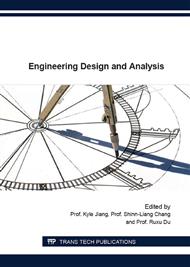p.105
p.113
p.118
p.123
p.128
p.134
p.140
p.149
p.155
Simulations and Experiments on the Force Control of Hydraulic Servo System for Hydraulic Robots
Abstract:
Because hydraulic actuator has higher power and force density, it is normally used in heavy load manipulator robots and industrial equipment which require high torque. Also, the hydraulic actuator is applied to underwater robots that need high performance maneuver in underwater operations. The force control has benefits to those kind of robots to ensure compliance with user or environment. However, the hydraulic actuator is difficult to control forces due to the non-linearity characteristic of the hydraulic servo system. In this paper, we propose a force control method with compensation of force derivative and natural velocity feedback. We also describe a method of applying it to the real system. In order to evaluate the effect of the proposed control method, the simulations and experiments were performed.
Info:
Periodical:
Pages:
128-133
Citation:
Online since:
February 2016
Authors:
Keywords:
Price:
Сopyright:
© 2016 Trans Tech Publications Ltd. All Rights Reserved
Share:
Citation:


